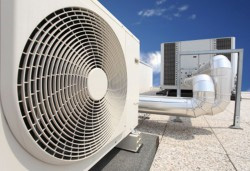Top 3 Trends for the HVAC
Industry in 2015
 The
HVAC industry is constantly evolving as the construction
market continues to change. During the U.S. housing boom
in the early 2000s, HVAC services soared to meet the
skyrocketing demand. During the financial crisis that
followed in 2008, HVAC slipped as the housing market
crashed. The
HVAC industry is constantly evolving as the construction
market continues to change. During the U.S. housing boom
in the early 2000s, HVAC services soared to meet the
skyrocketing demand. During the financial crisis that
followed in 2008, HVAC slipped as the housing market
crashed.
On the other hand, the worldwide push for green
technologies has also dictated developments in the HVAC
sector because consumers demand energy-efficient systems
that relieve both the environment and their wallets. As
a result, HVAC is shaping up to be one of the most
exciting and innovative trade industries. Here are three
specific trends poised to shape the HVAC field in 2015:
1. Interactive Technology Is Taking Over
Technology is pushing the evolution of HVAC units, but
it’s also changing the way we interact with them. New
user-friendly applications allow users to monitor and
adjust their units anywhere, anytime. Some software is
even able to learn your habits, automatically regulating
temperature and making suggestions on how to reduce
energy usage. Especially savvy units are even able to
use motion sensors to track when you're home, and adjust
usage accordingly. You can even use the software to
enter a monthly budget, and the unit will map out the
best way to meet it.
Technology is also changing the way that HVAC companies
and their technicians serve customers. As reported in a
previous post, these applications allow companies to
design custom systems on the fly, manage appointments
and plot psychrometrics on the field, among many other
things. These advancements let HVAC technicians work
more efficiently, permitting them to address customers’
specific needs.
2. Zero Energy Is Now Possible
Over the past decade, the push for energy efficiency has led to many homes and
businesses reducing their energy usage. Recently, however, corporations have
taken it a step further by implementing zero energy systems, which produce an
equal or greater amount of energy than they consume. RefrigerationSchool.com
explains that zero-energy buildings are popular among eco-conscious people who
seek to sustain themselves while decreasing their carbon footprint at the same
time.
For the most part, zero
energy has been a niche reserved for only businesses with very deep pockets.
However, zero energy systems are becoming more cost-effective and user friendly.
Examples include solar-powered energy systems, white and solar-powered roofing,
as well as geothermal cooling and heating systems. The growing popularity of
this approach in HVAC means that zero energy is poised to continue booming in
2015.
3. DEVap Systems Are Booming
DEVap (desiccant-enhanced evaporative air conditioner) Air Conditioning was
developed by the National Renewable Energy Laboratory (NREL) specifically to
reduce energy use and transform cooling processes. According to Business
Insider, DEVap technology is able to reduce energy costs by 40% to 80%. DEVap is
so energy-efficient because desiccant and evaporative cooler work together to
create cold-dry air: the desiccant dries out the humid air while the evaporative
cooler turns that dry air into cold air. Traditional air conditioners need to
dehumidify first the air before cooling it, an energy-consuming process,
particularly in humid areas.
While it was originally developed for commercial buildings due to their immense
need for temperature and humidity control, DEVAp is quickly becoming viable for
small businesses and home owners who want to drastically reduce their
electricity bill—which is to no small effect driven up by air conditioning.
Those striving for energy-efficient cooling systems will undoubtedly turn to
DEVap technology in the near future.
As technologies and customers’ demands continue to evolve, HVAC technology will
keep advancing and growing in new, unpredictable ways. We can be confident that
2015 is going to be a promising year for the HVAC industry.
|
